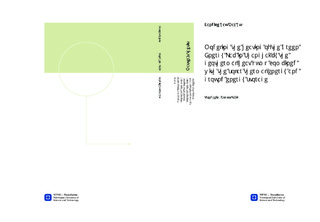| dc.description.abstract | This work involves the study of heating systems that combine solar collectors, geothermal heat pumps and thermal energy storage in the ground. Solar collectors can reduce the electricity use in these systems by reducing the operation time of the geothermal heat pump and by increasing the ground source temperature. These systems can be designed in many ways, consequently the complexity is high. The purpose of this study has been to develop simulation models to study the behavior of these systems, with emphasis on the thermal energy storage in the ground. A simulation tool with several models has been developed in the simulation software TRNSYS based on the proposed heating system at the GEL under the metrological conditions of Shanghai. The program was used for an intensive simulation study, in which the interaction with the borehole heat exchanger, the geothermal heat pump, the evacuated tube collector and the load requirements could be analyzed. A base case was developed to make it possible to vary and compare the design parameters of interest, such as the ground storage volume, the flow rate of the solar collector and the solar collector area. The base case was based on the design parameters of the GEL. The GEL was used as reference building and was simulated in TRNBuild with the thermal characteristics of the building material. From the simulations the heating demand of the building could be obtained and the building model could later on be used as a heat load for the other simulation models. The results showed that the there were heating demand from November to March. The four operation modes of the proposed heating system at the GEL were presented. All of the operation modes were simulated in TRNSYS. The four operation modes were solar thermal ground storage, solar direct heating, direct heat exchange with the ground storage and geothermal heat pump. The operation modes worked in two different seasons, storage season and heating season. The ground storage mode was studied thoroughly by varying the parameters of interest. To test the significance of the borehole configuration, the storage volume was kept constant and the number of boreholes and the borehole spacing were varied. It was found that a compact pattern with a high number of boreholes and small borehole spacing is favorable for borehole thermal energy storages. The performance of a ground storage is directly linked to the storage size. The solar collector efficiency is highly dependent on the return temperature of the storage. It was decided to continue to work with a compact pattern of the storage, rather than the base case of the GEL. This is because this kind of storage showed the most promising storage efficiency and also reached a high ground temperature during storage season.Simulations of the heating modes showed that the solar direct heating mode, the direct heat exchange with ground storage mode and the geothermal heat pump mode can each cover 37%, 25% and 38% of the heating demand respectively. For the simulations of the geothermal heat pump it was shown that the borehole depth is a very important factor for the system performance. Too short borehole depth will cause unstable and too low temperatures at the inlet of the evaporator. To compare the electricity use of a geothermal heat pump system with and without solar collectors there were also performed simulations for a traditional geothermal heat pump system. Results showed that 26.1% of the electricity consumption could be saved. The savings was mostly due to the reduced operation time of the heat pump, since other heating modes could be used. The studies showed that due to the complexity of such systems it is very important to perform simulations to optimize the performance. There are many factors that play an important role since there are so many components involved. The simulations showed that sizing of the system is critical for the system performance. | nb_NO |

